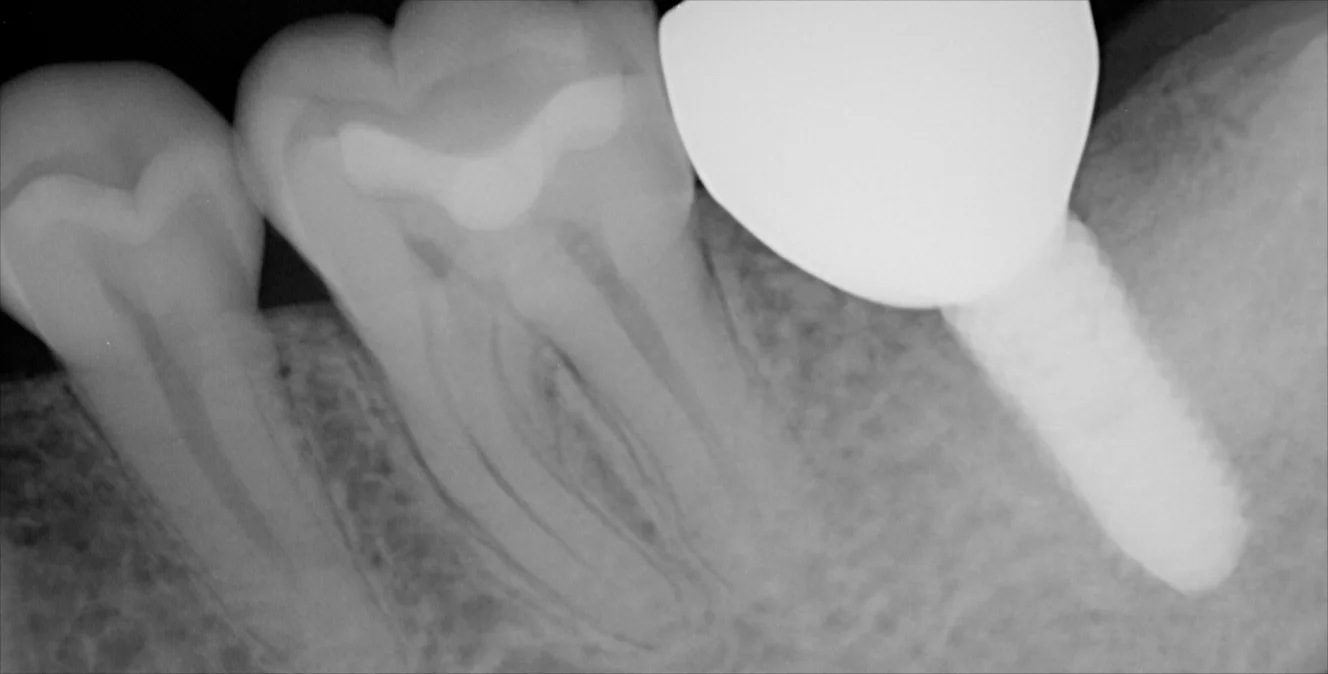
Implants
Dental implants are an anchorage root system for lost teeth, and are an option for replacing missing or badly diseased teeth. The placement of a dental implant may require additional procedures depending on the circumstances of each patient's oral cavity. Dr. Cheng will review each individual's case regarding implants and discuss treatment options available. Our office is stocked with implant supplies and parts, ready to serve you today.
Dental Implants
A dental implant is a titanium post (like a tooth root) that is surgically positioned into the jawbone beneath the gum line that provides a strong foundation for replacing a single tooth or multiple teeth. The success rates of today's implants are high. A dental implant offers comfort and stability and, by virtue of the artificial tooth it supports, is a restoration that is the closest thing to a natural tooth. Dental implants also benefit general oral health because they do not have to be anchored to other teeth, and can be used for bridges (called implant-supported bridges) and in full mouth reconstruction cases as well as providing stable support for dentures.A dental implant consists of three main parts: the implant screw, the abutment, and the crown restoration. The time frame for completing the implant and crown depends on many factors and the method used. In the traditional method, two procedures are required, with three to six months between them. In some cases, an immediate implant can be placed right after a tooth extraction.
Bone Grafts
Bone augmentation is a term that describes a variety of procedures used to "augment" or add bone so that dental implants can be placed. These procedures typically involve grafting (the addition) of bone or bonelike materials to the jaw. The most common use of bone grafting is in the application of dental implants to restore the edentulous area of a missing tooth. Dental implants require bones underneath them for support and proper integration into the mouth. If the jaw bone is too thin or soft to keep the implant in place or the bone cannot support the implant,the implant may fail.
Guided Bone Regeneration
Guided bone regeneration is a surgical procedure that uses barrier membranes to "guide", or direct the growth of new bone and gingival tissue at sites with insufficient amount or dimension of bone or gingiva (gums) for proper function, aesthetics or prosthetic restoration. Combined with bone grafts, guided bone regeneration is predominantly applied in the oral cavity to support new hard tissue growth on the jaw bones to allow stable placement of dental implants.
Sinus Lift Surgery
A sinus lift is surgery, also called sinus augmentation, is a procedure that adds bone to to the area around the upper posterior teeth, between the maxilla bone and the maxillary sinus, located on both sides of the face. The goal of the sinus lift is to graft extra bone into the maxillary sinus, and is performed when the floor of the sinus is too close to an area where dental implants are to be placed. Sinus lift surgeries may be indicated for a variety of reasons including anatomy, loss of teeth and subsequent bone remodeling, and enlarged sinuses as humans age.To make room for the bone, the sinus membrane has to be moved upward, or "lifted", and the bone packed in. Not everyone who gets upper posterior implants will need a sinus lift surgery, and Dr. Cheng will thoroughly evaluate if one is indicated in each case.
Spotlight Cases
Single Implant Case: The tooth with the crown had a root fracture; tooth was extracted and an implant placed; the implant was later restored with a new crown.
Immediate Implants Case: Two lower anterior teeth were extracted from advanced gum disease; immediate implants were placed in a single visit, with temporary crowns (not pictured). Picture on the right shows final restorations.
Multiple Implants Case: Patient's initial presentation (first image). After many days of pre-operative planning and workup, all implants were placed the same day. The second picture shows the final post-operative x-ray with crowns and bridges restored on implants. The third photo depicts the patient's smile with temporary crowns after the implants have been placed.


